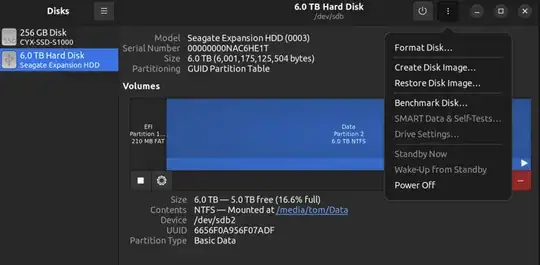I just bought a 6TB external seagate HDD (STKP6000400) to use for storing media, but I have noticed it is spinning at full speed, all the time. Even after leaving the PC idle overnight the next morning it is still spinning.
I've searched for this issue and tried all the common fixes I can see such as repsonses here: How can I control HDD spin down time?
If I run hdparm -I on the disk this is the output:
ATA device, with non-removable media
Standards:
Likely used: 1
Configuration:
Logical max current
cylinders 0 0
heads 0 0
sectors/track 0 0
--
Logical/Physical Sector size: 512 bytes
device size with M = 1024*1024: 0 MBytes
device size with M = 1000*1000: 0 MBytes
cache/buffer size = unknown
Capabilities:
IORDY not likely
Cannot perform double-word IO
R/W multiple sector transfer: not supported
DMA: not supported
PIO: pio0
I can see it doesn't even know the device size so it seems something is not right?
Trying to set the sleep timer with hdparm -S gives the response:
/dev/sdb:
setting standby to 10 (50 seconds)
SG_IO: bad/missing sense data, sb[]: 70 00 05 00 00 00 00 0a 00 00 00 00 24 00 00 00 00 00 00 00 00 00 00 00 00 00 00 00 00 00 00 00
In the disk utility I cannot choose "Standby Now" or try to configure drive settings as these options are disabled:

Even if I unmount the drive and leave it for a while it never spins down. It is formatted as NTFS if that matters.
I am new to Ubuntu/Linux so I may be doing something very basically wrong, any help is appreciated.